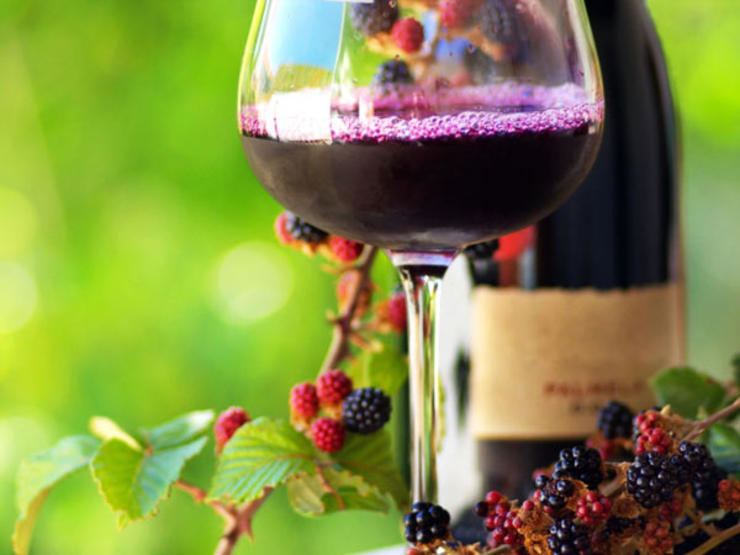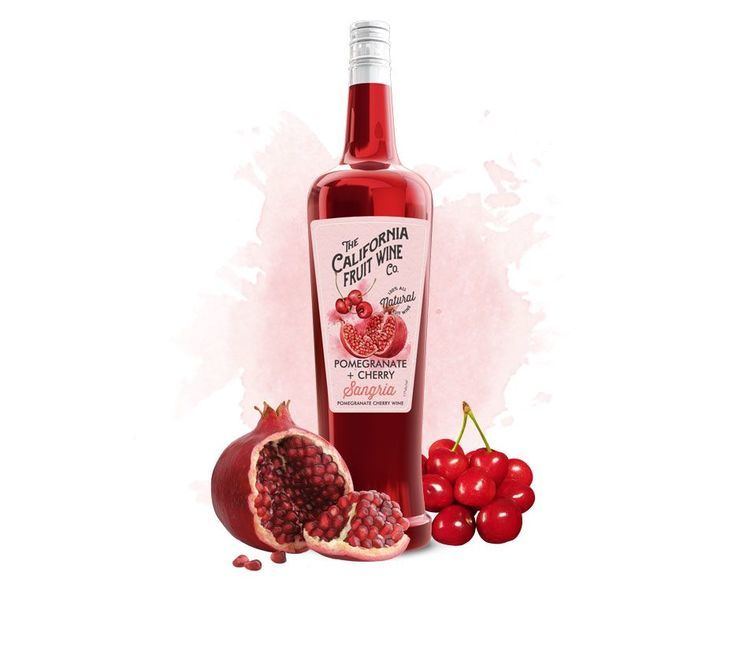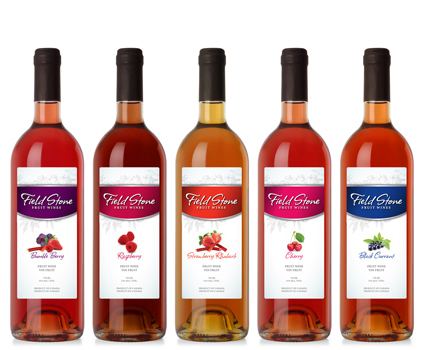 | ||
Similar Umeshu, Mead, Baijiu, Sake, Huangjiu | ||
Field stone fruit wines
Fruit wines are fermented alcoholic beverages made from a variety of base ingredients (other than grapes); they may also have additional flavors taken from fruits, flowers, and herbs. This definition is sometimes broadened to include any fermented alcoholic beverage except beer. For historical reasons, mead, cider, and perry are also excluded from the definition of fruit wine.
Contents
- Field stone fruit wines
- Homemade wine blueberry wine how to make fruit wine diy wine recipes
- Labeling
- Production
- Plum wine
- Pineapple wine
- Dandelion wine
- Rose hip wine
- Redcurrant and whitecurrant wines
- References

Fruit wines have traditionally been popular with home winemakers and in areas with cool climates such as North America and Scandinavia; in Africa, India, and the Philippines, wine is made from bananas.

Homemade wine blueberry wine how to make fruit wine diy wine recipes
Labeling

Fruit wines are usually referred to by their main ingredient (e.g., plum wine or elderberry wine) because the usual definition of wine states that it is made from fermented grape juice.
In the European Union, wine is legally defined as the fermented juice of grapes.

In the United Kingdom, fruit wine is commonly called country wine; the term should not be conflated with the French term vin de pays, which is grape wine. In British legislation, the term made-wine is used.
Production
Fruit wine can be made from virtually any plant matter that can be fermented. Most fruits and berries have the potential to produce wine. There are a number of methods of extracting flavour and juice from the fruits or plants being used, pressing the juice, stewing and fermenting the pulp of the fruits are common. Few foods other than grapes have the balanced quantities of sugar, acid, tannin, nutritive salts for yeast feeding and water to naturally produce a stable, drinkable wine, so most country wines are adjusted in one or more respects at fermentation. However, some of these products do require the addition of sugar or honey to make them palatable and to increase the alcoholic content (sugar is converted to alcohol in the fermentation). Two commonly produced varieties are elderberry wine and dandelion wine. Tainted elderberry wine is the beverage used to commit murders in Joseph Kesselring's play and Frank Capra's film adaptation Arsenic and Old Lace. A wine made from elderberry flowers is called elder blow wine.
The amount of fermentable sugars is often low and needs to be supplemented by a process called chaptalization in order to have sufficient alcohol levels in the finished wine. Sucrose is often added so that there is sufficient sugar to ferment to completion while keeping the level of acidity acceptable. If the specific gravity of the initial solution is too high, indicating an excess of sugar, water or acidulated water may be added to adjust the specific gravity down to the winemaker's target range.
Many kinds of fruit have a natural acid content which would be too high to produce a savory and pleasant fruit wine in undiluted form; this can be particularly true, among others, for strawberries, cherries, pineapples, and raspberries. Therefore, much as to regulate sugar content, the fruit mash is generally topped up with water prior to fermentation to reduce the acidity to pleasant levels. This also dilutes and reduces overall fruit flavor; a loss of flavor can be compensated for by adding sugar again after fermentation which then acts as a flavor enhancer (known as a back-sweetener), while too much acid in the finished wine will always give it undesired harshness and poignancy.
Many fruit wines suffer from a lack of natural yeast nutrients needed to promote or maintain fermentation. Winemakers can counter this with the addition of nitrogen, phosphorus and potassium available commercially as yeast nutrient. In the opinion of one wine writer fruit wines often do not improve with bottle age and are usually meant to be consumed within a year of bottling.
Plum wine
Plum liquor, also known as "plum wine", is popular in both Japan and Korea, and is also produced in China. In China, plum wine is called meijiu (梅酒). Plum wine is normally made with distilled liquor and soaked with plum. The alcohol level is higher than typical fruit wine, which is fermented with just fruits.
Umeshu (梅酒) is a Japanese alcoholic drink made by steeping green plums in shōchū (燒酎; clear liquor). It is sweet and smooth. A similar liquor in Korea, called maesil ju (매실주), is marketed under various brand names, including Mae Hwa Su, Mae Chui Soon, and Seol Joong Mae. Both the Japanese and Korean varieties of plum liquor are available with whole Prunus mume fruits contained in the bottle.
In Taiwan, a popular post-World War II innovation based on Japanese-style plum liquor is wumeijiu (烏梅酒; smoked plum liquor), which is made by mixing Prunus mume liquor (梅酒 méijǐu), Prunus salicina liquor (李酒 lǐjǐu), and oolong tea liquor.
Another similar drink is plum jerkum, made from fermented plums in a manner similar to the use of apples for cider. It was often associated with the north Cotswolds and was once a product of the town of Worcester.
Pineapple wine
Pineapple wine is made from the juice of pineapples. Fermentation of the pineapple juice takes place in temperature-controlled vats and is stopped at near-dryness. The result is a soft, dry, fruit wine with a strong pineapple bouquet. Pineapple wine is popular in Thailand and other SE Asian countries, where it is made using traditional practices and is not available commercially. In Mexico, fermented pineapple beverages are very popular and given the name Tepache.
Commercial examples from around the world include Maui's Winery in Hawaii and Jacobs Wines of Nigeria, the first pineapple winery in Africa. It is also made in Dominican Republic by Vinicola Del Norte, its alcohol content is 10%. Several varieties of pineapple wine are made in Okinawa, Japan, from local produce. Its alcohol content is 11.5% ABV.
Dandelion wine
Dandelion wine is a fruit wine of moderate alcohol content that is made from dandelion petals and sugar, usually combined with an acid (such as lemon juice) and with wine-making chemicals such as sodium metabisulfite.
While commonly made as a homemade recipe, there are only a handful of wineries that commercially produce Dandelion wine, including Bellview Winery of New Jersey, Breitenbach Winery of Ohio, Hidden Legend Winery of Montana, and Maple River Winery of North Dakota.
Rose hip wine
Rose hip wine is a fruit wine. It can be made from fresh or dried rose hips. To produce this beverage, the rose hips are fermented in syrup with yeast and citric acid, creating an extract. This technique is used with only a few other types of fruit wine, including blackthorn (sloe), hawthorn, and rowan.
The best kind of wine produced from rose hips is strong and sweet, with at least two years of storage.
Redcurrant and whitecurrant wines
Redcurrant and whitecurrant fruit wines are beverages that are usually produced in northerly cool areas, where it is hard to grow high-quality grapes. They are simple to produce. Their natural chemical balances are such that they can be self-clarified without any additional substances. Redcurrants and whitecurrants contain only a small amount of carbohydrates; this necessitates the addition of sugar or honey.
Cherry wine is a type of fruit wine made with cherries, usually tart cherries that provide sufficient acid. Cherry wines can be used to make fortified wines and liqueurs. Michigan wine makers, located in the leading tart-cherry-producing region of the United States, produce several varieties of cherry wine, including spiced versions and cherry-grape blends. "Cherry Kijafa" is a fortified fruit wine that is produced in Denmark from cherries with added natural flavors, and usually contains 16% ABV. Among cherry liqueurs Maraska, a cherry wine made from Marasca cherry from Croatia, is among the best known. The last couple of years Fredriksdal Cherry Wine (partly invented by distinguished restaurant owner Jan Friis-Mikkelsen) has been produced in Denmark. Having growing international success Frederiksdal's goal is to make cherry wine of a quality equivalent to wine made from grapes.
